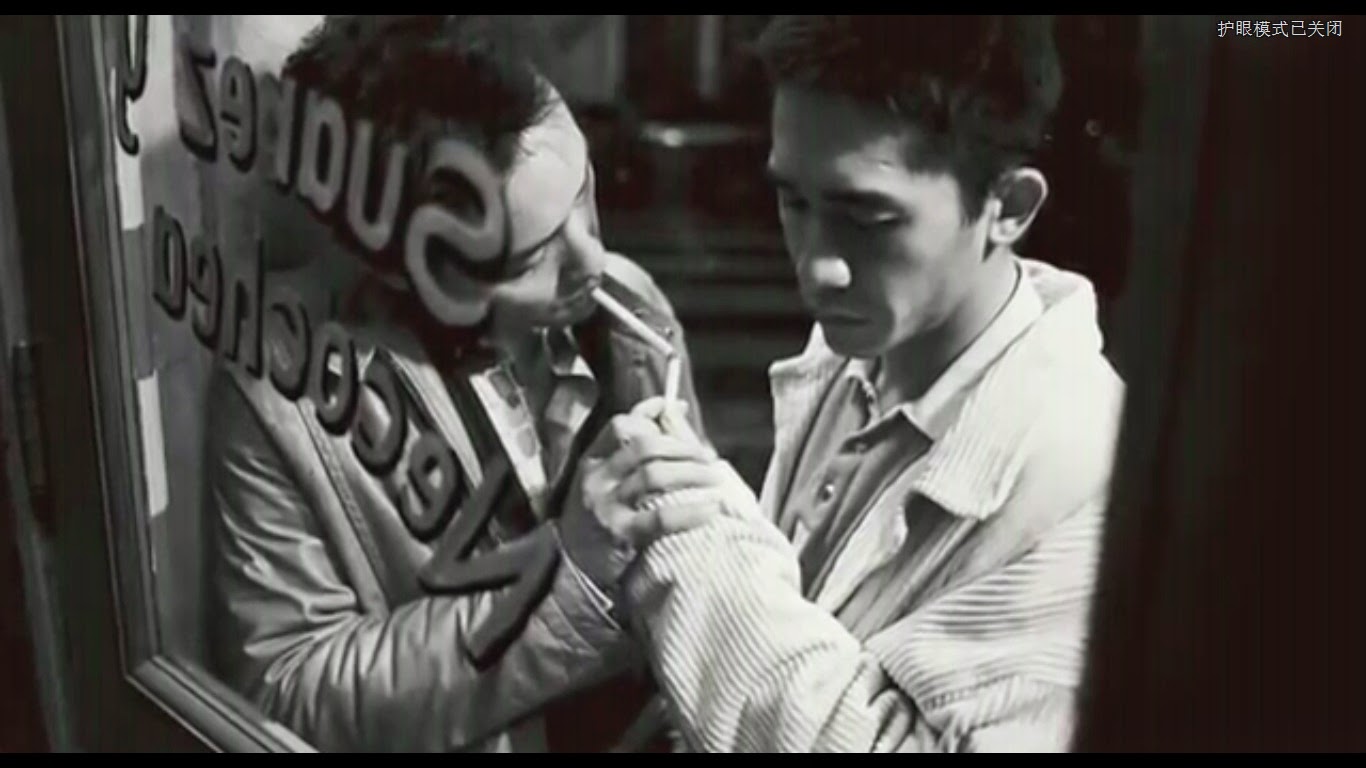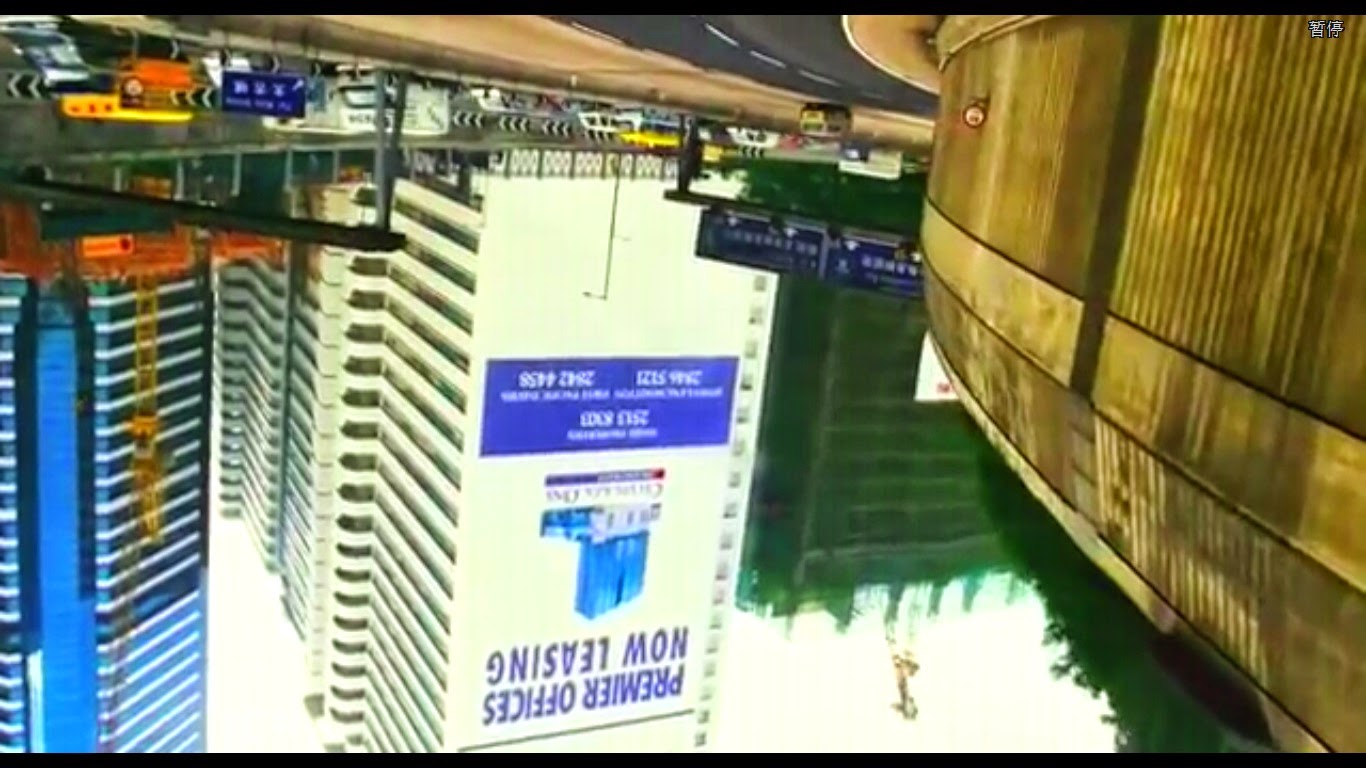Image by Offoff Art cinema
There are
several characteristics to differentiate the application of French
Impressionism movement in the films.
Emotions
French Impressionism always emphasizes on the emotions of
characters throughout the whole film. The Impressionist movement is a style
which derived partially from the director’s belief as films is a form of art.
Besides, the Impressionists view art as a form of expression which has the
ability to convey the personal vision of the artist. At the same time, art also
can create an experience and this experience will lead to emotions for the
audiences. Art creates these feelings indirectly by evoking or suggesting them
to the audiences instead of making direct statement to the audiences. This
means that artwork creates or generates quick feelings as well as expression.
In addition, art also provide a space for audiences’ imagination.
For example, the cinematographer for Happy Together (Wong
Kar-Wai, 1997), Christopher Doyle manages to express emotion in the
monochromatic scenes, as in the shot of Ho Po Weng taking Lai Yiu Fai’s hand,
which is holding a cigarette to light his own (in the scene which Lai Yiu Fai
returns the watch to Ho Po Weng). He gradually overexposes the shot to
intensify the white, creating a sensation that actors are being consumed by
heat as they suck on their cigarette (Teo, 2005). The scene literally sizzles
with suppressed feeling (Teo, 2005).
Image by Youtube
Cinéma Pur
Impressionist theories treated the cinema as a “pure”
medium, presenting unique possibilities to the artist (Bordwell & Thompson, 2012)This
claim led some filmmakers to advocate making only cinéma pur, abstract films
that concentrated on graphic and temporal form, often with no
narrative (Bordwell & Thompson, 2012). The abhorrence of conventional
narratives form, as well as the wish to create non-iconic images led the cinema
purists to treat reality as no more than incidental raw material (Horak, 2014).
Photogénie
Photogénie is a term that indicates something more complex
than objects simply being “photogenic" (Thompson & Bordwell, 2009). Impressionists believed that the
cinema gave us access to a realm beyond everyday experience (Thompson
& Bordwell, 2009). It shows us the souls of people and the essence of
objects (Thompson & Bordwell, 2009). In French Impressionism, the
Impressionists always use different kind of objects as metaphors to represent
feeling, emotion, mood or relationship in a subconscious way.
For example, in Happy Together (Wong
Kar-Wai, 1997), they used The Iguazu Waterfall as the photogenic throughout the
film. The Iguazu represents the destination of both characters - a dream place
where people are looking forward to. At the beginning of the story, they
mentioned about that Iguazu Waterfall is a destination that they wish to pay a
visit together. They have a lamp with the Iguazu Waterfall on it which is
bought by Lai Yiu Fai. The light of the waterfall on the lamp is so bright and
colorful, and representing Lai Yiu Fai the potential for happiness and
togetherness. It's somehow like a fantasy for their future relationship.
Image by youtube
Iguazu Waterfall is somewhere as a kind of wonderful place,
so close yet so far. Both of them believed that if they could make it to this
dream place together, their sick relationship will get better. However, the
actual waterfall which is dark and dangerous come to represent the ending of
their trip is not what he has expected, it's cruelty, heartless but not
reconciliation . Lai Yiu Fai has made it to the Iguazu Waterfall signifying he
has gone through their sick relationship and able to start his new life. The
waterfall which cascades down toward him implying that he is having a baptism
in some way, washes away all his love bruises and memories with Ho Po Weng. And
yet, he is ready for a new world.
Visual Rhythm
Besides that, the Impressionists also argued that film
form should be based on visual rhythm (Thompson & Bordwell, 2009). The rhythm
arises from the careful juxtaposition of the movements within the shots and the
lengths of the shots themselves (Thompson & Bordwell, 2009). For the
Impressionists, rhythm was central, because it offered a way to emphasize the
characters’ reactions to story action rather than focusing solely on the action
itself (Thompson & Bordwell, 2009). The impressionists insisted that, they
tend to put their films closer to music than to any other art form (Thompson
& Bordwell, 2009).
Flashback and Fantasy
French Impressionism always gives narration considerable for
the psychological depth, revealing play of the character’s consciousness,
concerns mental states, dreams or fantasies of the viewers. There will be some
scenes of dreaming or fantasies that happen on the characters or appear in the
film. For example, in Happy
Together(Wong Kar-Wai, 1997), they
shoot Hong Kong City in an upside down traffics to show how the city might look
to Lai Yiu Fai from his geographical location, Buenos Aires.
Image by youtube
This scene also can be seen as the direct interpretation of Lai
Yiu Fai’s imagination. Sometimes, it is beyond the understanding of the
audiences toward the scene and the audiences probably do not get the meaning or
the message that convey by the scene immediately. Besides that, in French
Impressionism film, there will be also some scenes of flashback that will
appear in the film. The flashback of memory shows the motive and mind of the
characters. The flashback of memory conveys the message subtlety and the
condition of past events to the audience. So that, the audience can easily
understand the follow of storyline.
Devices of Camera
French Impressionism cinema concerned about the use of
camera. For example, when the character in the film is looking for something,
there will be a Point of View shot from the perspective of the character.
Besides that, when the character feels dizzy and faint, the image of the film
will be distorted or the camera will move unsteadily. This is the way to let
audiences understand the languages of the film. In the setting of French
Impressionism, the cameraman will shoot the scene through some translucent
object that places in the scene for example like gap of the gate door or the
edge of the wall.
For example, in In the Mood for Love (Wong Kar-Wai, 2000), the filmmakers
shoot the scene of Chow Mo-Wan and Su Li-Zhen meet together secretly at night
through the gap of the window gate. This camera angle made audiences feel that
they are actually peeking the behaviors or actions of the characters. On the
other hand, the purpose of speeding up some scenes with jump cuts to capture
the traffic of the country is to make the audiences feel the accelerated pace
of urban time and the busy life in the country.
Image by Youtube
Editing
In the editing patterns of the French
Impressionism film, there will be a temporal relations between the shots to
create the feeling of flashback or fantasy of the characters. Sometimes, they
will apply black and white tone filters as the flashback scene of the film
whereas colorful tone apply in the fantasy shot in the film. Besides, filters
are also often being used during editing to get a better photographic effect.
The characters’ thought and feelings can be shown by using irises,
superimposition, masks etc. In addition, the fractured montage is used to
record the complicated emotions of the characters. Montage is a rhythm of grouping
all the relevant shots together as a sense of one moment. For example, in Happy Together (Wong Kar-Wai, 1997), the montage has
been shown in the scene which Lai Yiu Fai and Ho Po Weng confront with each
other through chains of jump cuts that made from every available angle and
distance.













No comments :
Post a Comment